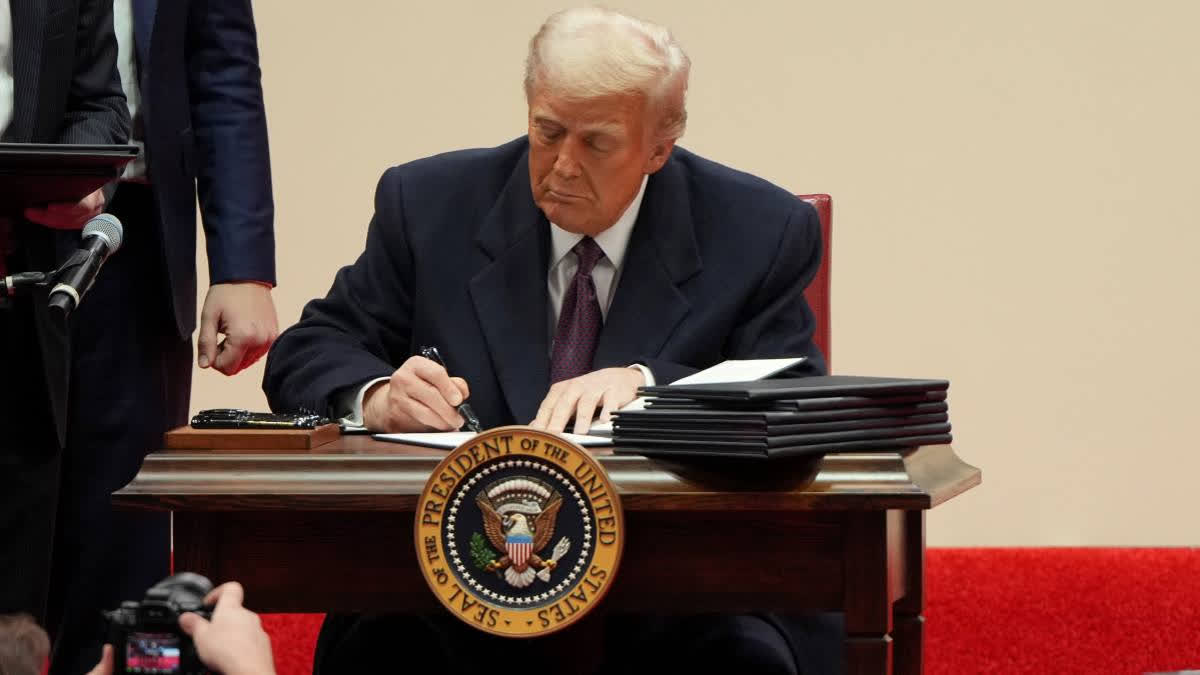From Leadership to Withdrawal, The U.S. and the Paris Agreement
In 20 th January 2025, President Donald Trump took swift action on the first day of his second term to initiate the United States’ withdrawal from the Paris Agreement, the international treaty aimed at limiting global warming. This move reflects his administration’s longstanding focus on expanding fossil fuel production and scaling back climate-related regulations. On Monday, President Donald Trump signed an executive order directing the United States to withdraw from the Paris climate agreement once more, undermining global efforts to tackle climate change and further distancing the U.S. from its key allies.
The stakes of this decision are immense, as the world continues to grapple with the escalating impacts of climate change. The threshold of 1.5 degrees Celsius of global warming, a key target outlined in the Paris Agreement, was crossed in 2024. This marks a critical moment in the fight against climate change, as it indicates that the planet has already reached a level of warming that many experts warn will trigger severe and potentially irreversible impacts on ecosystems, weather patterns, and human communities.
The significance of crossing the 1.5-degree threshold is profound, not just for the environment, but also for global efforts to adapt to and mitigate the effects of climate change. As global temperatures rise, the frequency and intensity of climate-related disasters, such as wildfires, storms, and heatwaves, are expected to increase, leading to higher economic and human costs.
Given these developments, the continued U.S. involvement in the Paris Agreement and its climate goals are seen as critical for both addressing the global climate crisis and ensuring the long-term stability of the planet’s ecosystems and human societies. The U.S. rejoining the agreement under the Biden administration in 2021 had been seen as a vital step in revitalizing international climate cooperation, but the actions taken by Trump in 2025 may set back global climate efforts significantly.
America’s history with the Paris Agreement has been marked by significant shifts in policy depending on the administration in power.
- Obama Administration (2015): The U.S. played a pivotal role in the negotiations that led to the adoption of the Paris Agreement in December 2015, under President Barack Obama. The agreement, aimed at limiting global warming, was seen as a landmark achievement in international climate diplomacy, and the U.S. committed to reducing its greenhouse gas emissions by 26-28% by 2025, relative to 2005 levels.
- Trump Administration (2017-2020): In 2017, President Donald Trump announced his intention to withdraw the U.S. from the Paris Agreement, citing concerns over economic impacts and what he saw as unfair burdens on American workers and businesses. This decision was formalized on November 4, 2020, a day after the U.S. presidential election. The withdrawal process took nearly four years, and the U.S. officially exited the agreement just days before the 2020 election.
- Biden Administration (2021): After taking office in January 2021, President Joe Biden immediately announced his intent to rejoin the Paris Agreement, marking a sharp reversal from the Trump administration’s stance. On January 20, 2021, the U.S. re-entered the agreement, signaling a renewed commitment to international climate action and setting ambitious domestic climate goals.
- Trump’s Second Term (January 2025): If Trump were to win the presidency again, he has indicated that he would reinitiate the process of withdrawing the U.S. from the Paris Agreement. This would align with his broader goal of increasing U.S. production of fossil fuels and rolling back climate regulations.
Thus, America’s relationship with the Paris Agreement has fluctuated significantly based on the political leadership in power, with periods of both strong commitment and retreat from international climate efforts.
The U.S. climate goal
The U.S. climate goal, as set by the Biden administration, was an ambitious target to cut climate pollution by up to 66% below 2005 levels by 2035. This goal, announced in December 2024, was part of a broader effort to meet the U.S. commitments under the Paris Agreement and to demonstrate a strong commitment to tackling climate change. The target was seen as a significant and forward-looking step, particularly given the previous administration’s stance on climate issues.
However, this target was also seen as a symbolic declaration. Former President Joe Biden knew that his predecessor, Donald Trump, had plans to withdraw the U.S. from the Paris Agreement, and the goal reflected a vision of what the country could achieve under a climate-friendly administration.
Experts, including climate advocates, expressed that the goal was ambitious, but also pointed out that the U.S. was not currently on track to meet it. As Kate Larsen from Rhodium Group noted, the U.S. was likely to fall even further off track if another Trump administration were to take office, as climate policies were expected to shift dramatically in such a scenario.
Brief about Paris Agreement
The Paris Agreement is an international treaty aimed at addressing climate change, adopted in December 2015 by over 190 countries during the United Nations climate summit in Paris. Its primary objective is to limit global warming to “well below 2 degrees Celsius” above pre-industrial levels, with an ideal target of 1.5 degrees Celsius. This goal was driven by the understanding that exceeding 1.5 degrees of warming would have severe and potentially irreversible consequences for ecosystems and human societies.
Although the 1.5-degree target was included as an aspirational goal due to the division among countries, it reflects the consensus among climate scientists on the need to limit warming as much as possible. The agreement set a framework for countries to take action, but it is non-binding. This means that countries are not legally required to meet specific emissions reduction targets. Instead, they voluntarily determine their own climate goals and methods for achieving them, known as “Nationally Determined Contributions” (NDCs).
The Paris Agreement also includes mechanisms for countries to report their progress and increase their ambitions over time, with the aim of keeping global temperature rise within the specified limits. However, critics argue that without mandatory enforcement mechanisms, the agreement may not be sufficient to prevent the worst impacts of climate change. As the climate crisis accelerates, there is growing concern that the world is not on track to meet the 1.5-degree target.
Also read:
Hormones and Health: The Key Players Behind Your Body’s Functions | Maya
How Cultural Narratives Shape National Pride and Patriotism | Maya


